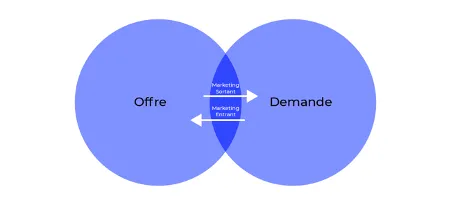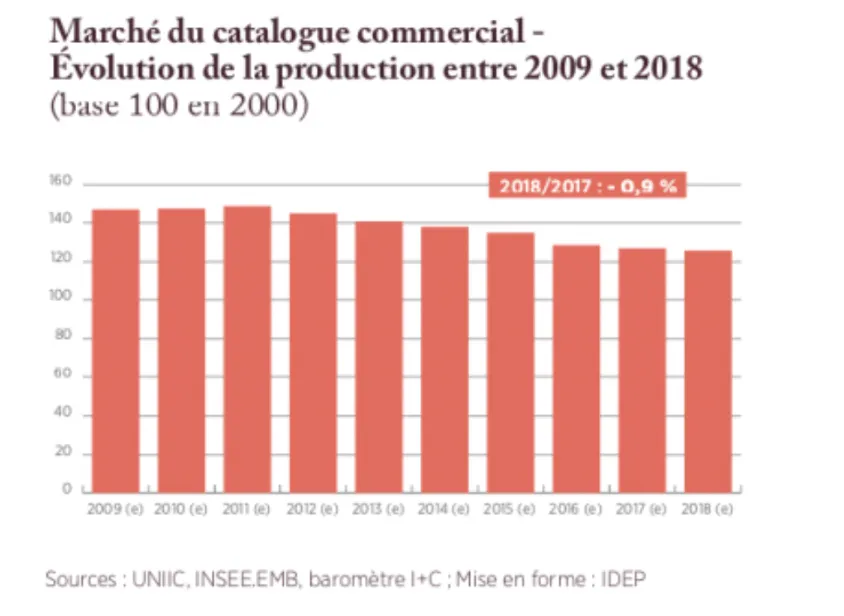Should we start to rewind? Have we definitively put an end to the marketing of the 2000s? These questions must be answered in order to bring us back on track with our communication strategies.
For several years now, there has been an increasing focus on digital marketing strategy. To fully understand the current situation. The following points should be clarified: what are communication , digital marketing , and traditional marketing?
Communication, marketing’s right hand
In companies, it has become essential to have a communication strategy. Can we really differentiate it from marketing? Well, no! In fact, communication is a branch of marketing. In fact, although it is often linked to a specific department in a company, it is a direct result of the overall marketing plan.
To simplify, marketing is defined as a set of actions aimed at promoting a service or product. Among these actions, we find the “marketing study” allowing us to understand the market better, but also the communication plan that will allow us to better reach this market. Therefore, communication is a tool to reach the market targeted by the marketing plan.
Traditional Marketing vs Digital Marketing: the clash of generations
Let’s look at two types of marketing, traditional and digital.
First of all, which media do they include? The so-called “traditional” marketing includes :
- Paper advertising inserts;
- Catalogs, brochures, flyers and other printed materials (“print media”);
- Radio advertising;
- Telephone prospecting (“cold-calling” in English)
Digital marketing includes :
- Websites ;
- Social networks;
- E-mailing (Newsletters).
They are often differentiated through their purpose. Traditional marketing is regularly considered as pushing the offer toward the demand “outbound marketing”, on the contrary, digital marketing is seen as attracting the demand towards the offer “inbound marketing”.

As a result, we all tend to prefer the idea of being free in our choices, consumers want to have power over the offers that are proposed to them. For this reason in part, digital marketing has gained momentum over the decade.
Is this the end of traditional marketing?
Let’s focus on publishing, the core business of J2S. As you may have noticed, traditional marketing and especially paper media have gradually decreased over the years. Does this mean that traditional media will soon come to an end? The answer is no, you might have guessed it (otherwise what’s the point of this article).
Time to get out the figures.
According to a study by IDEP, catalog production gradually declined between 2008 and 2018 with a 0.9% decrease between 2017 and 2018.

This decline seems unstoppable, but what’s behind these numbers
Companies are more attentive to your needs.
As mentioned before, traditional marketing is considered marketing where you push supply toward demand, which can annoy customers. Have companies decided to use it differently in order to respect your needs? The truth is surely quite different. One of the problems that regularly comes up is the difficulty to calculate the return on investment (ROI). How to know who read your paper communication, or who came to your store thanks to your catalog? Unlike digital marketing which has many methods to measure its campaigns.
The reasons for this slowdown do not necessarily come from the disappearance of traditional marketing but rather from a desire to better target its audience. Indeed, it is clear that the massive sending of catalogs is over. For this reason, more relevant targeting will have an important impact. Moreover, the arrival of digital marketing has encouraged companies to spread their resources over different marketing methods, which reduces the proportion allocated to traditional marketing.
Well, yes, but then…
Allow me to give you some figures;
According to the OpinionWay study (2020), more than 55% of French people believe that the advertising catalog is useful.
Moreover, 65% of them declare that printed advertising contributes to improving their consumption choices thanks to better information 1.
According to the figures revealed by large retailers, 13% of average turnover is generated by a leaflet campaign 2. We understand that traditional marketing is still the way to go.
At J2S we believe in taking things to the next level.
So we still have a lot of time ahead of us (“yay”). However, we want to improve the customer experience even more through a less paper-consuming and more relevant catalog.
The latest events in the world make us think that traditional marketing has and will always have its place in the next few years. Indeed, as Ludovic Martin, print consultant, and blogger, explains in one of his articles, the Facebook privacy scandals, the RGPD rule and the studies on the high environmental impact of the Cloud make the question of digital marketing as the best acquisition solution more and more questioned. We would like to point out that every day, nearly 1.4 billion emails are sent in France according to Médiametrie, it is one of the channels most used by marketers. However, this one could well run out of steam.
The French are feeling gradually overwhelmed by this wave of emails. Although emailing campaigns are still effective, they may tend to drown in the mass and not be as relevant anymore.
Brands are therefore looking for ways to stand out and we have understood this. It’s the return of the paper medium and the future of the catalog is personalization. Some brands have understood this. The idea is no longer to oppose traditional marketing with digital but to make them work together. The result is clear, the personalized catalog is an outstanding solution and J2S can help you. Using the data available in the CRM and the segmentation made by the company, J2S is able to generate a personalized catalog. Thanks to our Simple Workspace technology, we can generate millions of PDF units from InDesign documents, saving precious time in marketing campaigns.
In conclusion, traditional marketing is alive and well, it evolves and now relies on digital to regain its former grace. This is where the print medium feeds off the present environment. We are convinced that personalized catalogs, which are part of traditional marketing, are the future for companies looking to expand.
On the one hand, the customer experience is more important, the consumer feels listened to in his requests with greater relevance in the products that are proposed to him.
On the other hand, the results of companies that have launched personalized catalogs, such as Cyrillus or Blancheporte, show their efficiency. Finally, personalization allows a reduction in the number of pages printed for each customer, resulting in cost savings, but especially a lower ecological impact.
Interested in learning more about traditional marketing and personalized catalogs?
Please feel free to
contact us.

B. Chauvel
Sales manager











